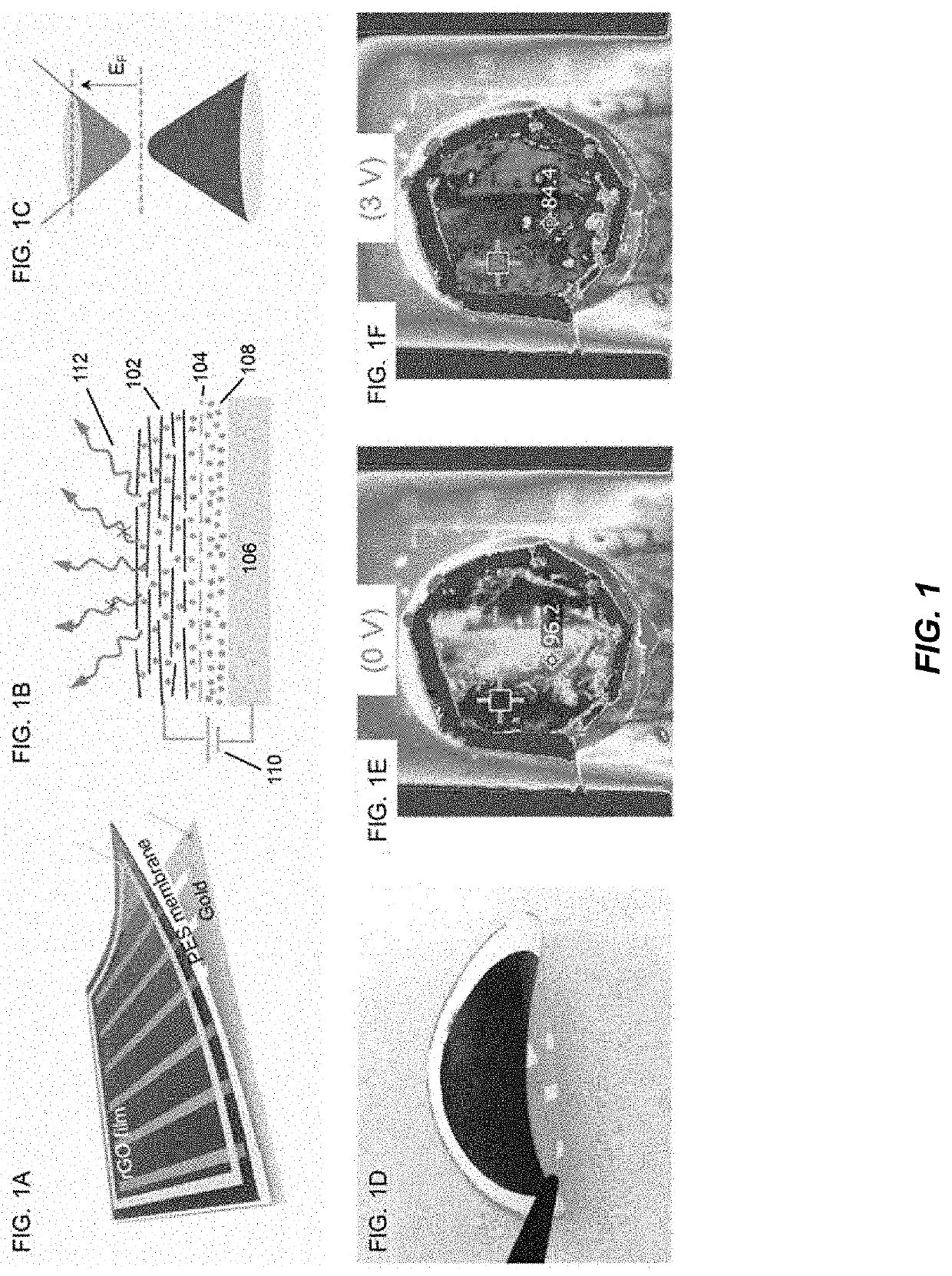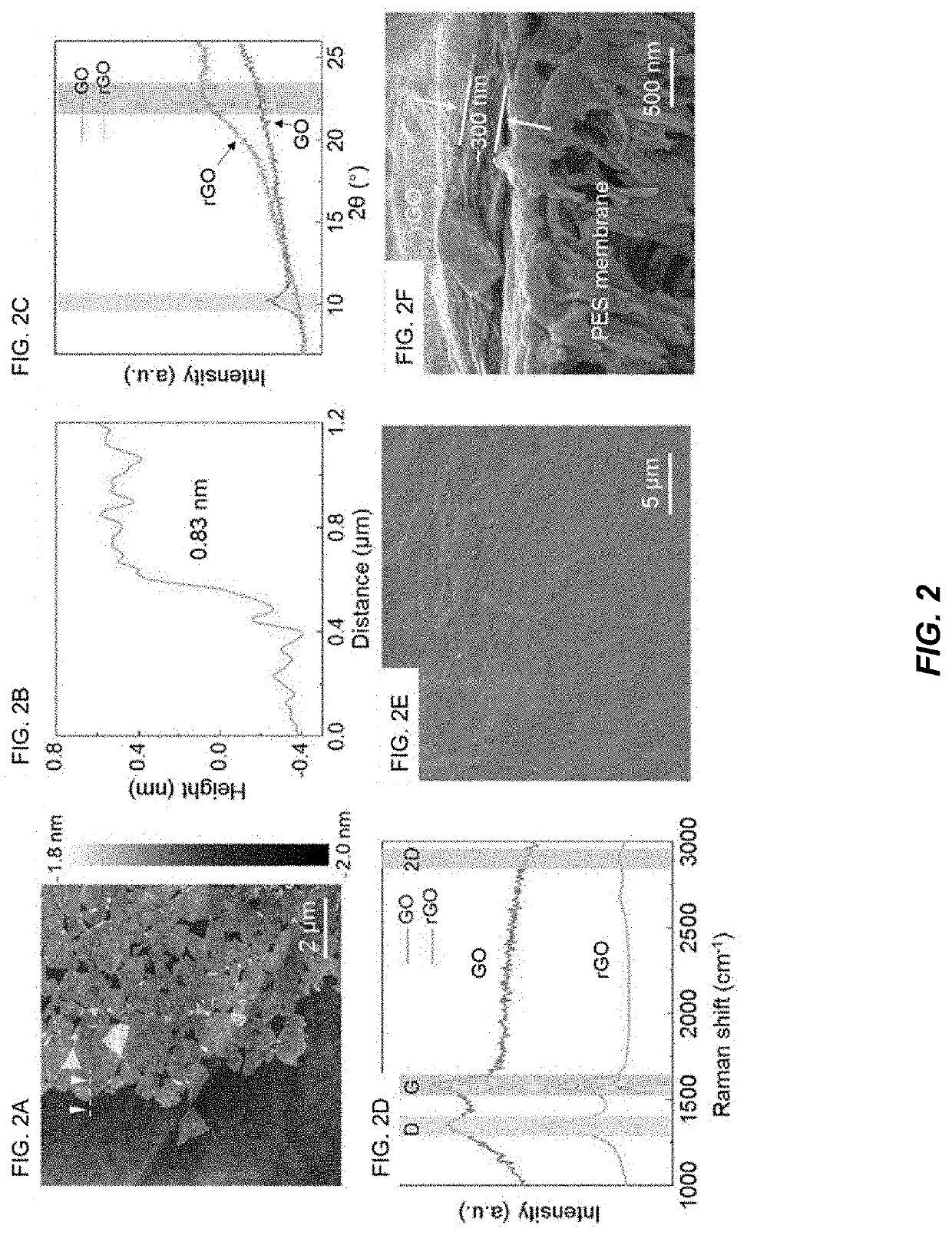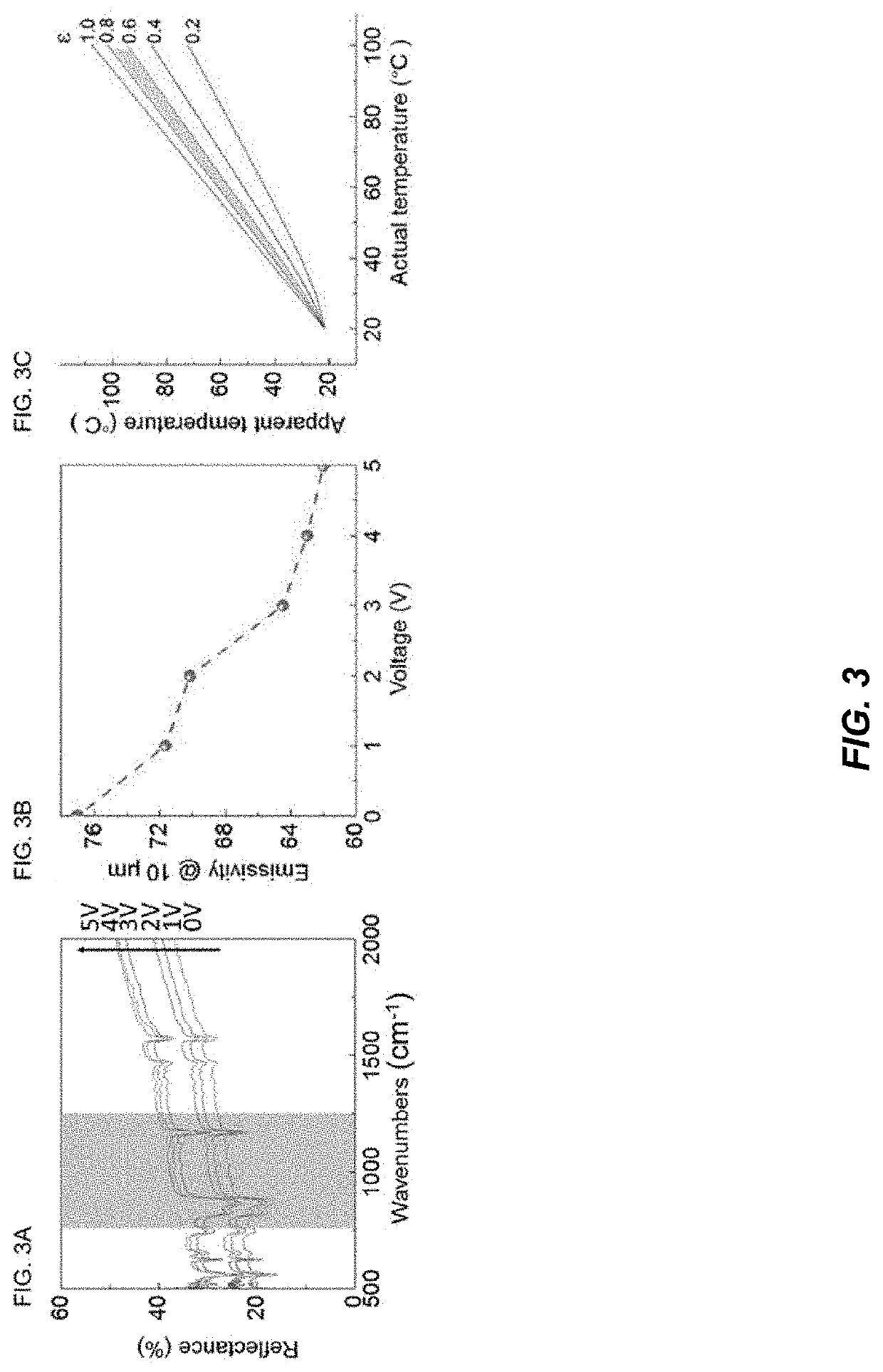Thermal material and a method of making the same
a technology of thermal materials and thermal materials, applied in the field of thermal materials, can solve the problems of high cost of graphene and facilities used in the fabrication of devices, limited optical applications of graphene materials, and complex steps to fabricate conventional devices
- Summary
- Abstract
- Description
- Claims
- Application Information
AI Technical Summary
Benefits of technology
Problems solved by technology
Method used
Image
Examples
example 1
of Thermal Material
[0115]50 mL of diluted graphene oxide (GO, flakes with a size of 1000 to 10000 nm, purchased from Sigma Aldrich, Singapore) dispersion (10 mg / L) was self-assembled onto porous polyethersulfone (PES) having a pore size of 30 nm (purchased from Sterlitech of Auburn, Wash., the United States) under vacuum. A graphene oxide layered material with an interlayer distance from 6.4 to 8.8 Å depending on the graphene oxide's degree of oxidation.
[0116]The graphene oxide layered material was then reduced by an aqueous solution of ascorbic acid (30 mg / mL, purchased from Sigma Aldrich, Singapore) by immersion of the material in the solution for 24 hours. It was observed that the material's colour changed from light yellow to dark. In addition, the interlayer distance was reduced to 3.9 Å. Thus, it was shown that a layered composite material of reduced graphene oxide (rGO) was formed on the porous PES material. The layered composite rGO / PES material was then dried overnight at r...
example 2
ization of Thermal Material
[0120]Referring to FIG. 1D, a photograph was taken for the fabricated active thermal material, which was flexible and light, and could be used as a cladding for target objects.
[0121]Atomic Force Microscope (AFM, Bruker Dimension Icon) images manifested that the GO flakes used could be homogenously suspended onto SiO2 / Si substrate with a uniform contrast. The lateral size of GO ranged from 1 to 2 μm (FIG. 2A). Moreover, the GO's corresponding height profile demonstrated that it was single-layered with a thickness of about 0.8 nm (FIG. 2B). The rGO film was obtained by directly filtering GO dispersion onto asymmetric polyethersulfone filtration membrane with pore size of 30 nm, followed by ascorbic acid reduction. The XRD, Raman (WITEC ALPHA300R; 532 nm laser excitation, 100× object lens) and X-ray photoelectron spectroscopy (XPS, Kratos Analytical Axis-Ultra spectrometer using a monochromatic Al Kα X-ray source) results confirmed a successful reduction of G...
example 3
fect of Thermal Material
[0124]To evidence doping effect of the rGO by intercalation of ions, variation of the thermal material's optical response was measured by a Fourier transform infrared spectrometer (FTIR) under different bias voltages. As shown in FIG. 3A, the thermal material's optical reflectivity increased significantly with an increase in bias voltage over the visible and the full mid-infrared range, and the reflectance was increased by a factor of 1.6 at a bias voltage of 5 V. The suppressed infrared emissivity due to Pauli blocking and the enhanced Drude optical conductance led to increases of the infrared reflectance. However, the electrochemical window of the ionic liquid used limited the maximum value of the applied bias. Moreover, to avoid destruction of the rGO's structure, the applied maximum bias voltage for thermal stealth measurement was set to be 3 V.
[0125]Apparent temperatures as detected by a thermal camera followed the Stefan-Boltzmann law, i.e., P=εσT4, whe...
PUM
| Property | Measurement | Unit |
|---|---|---|
| Pore size | aaaaa | aaaaa |
| Pore size | aaaaa | aaaaa |
| Thickness | aaaaa | aaaaa |
Abstract
Description
Claims
Application Information
 Login to View More
Login to View More - R&D
- Intellectual Property
- Life Sciences
- Materials
- Tech Scout
- Unparalleled Data Quality
- Higher Quality Content
- 60% Fewer Hallucinations
Browse by: Latest US Patents, China's latest patents, Technical Efficacy Thesaurus, Application Domain, Technology Topic, Popular Technical Reports.
© 2025 PatSnap. All rights reserved.Legal|Privacy policy|Modern Slavery Act Transparency Statement|Sitemap|About US| Contact US: help@patsnap.com



